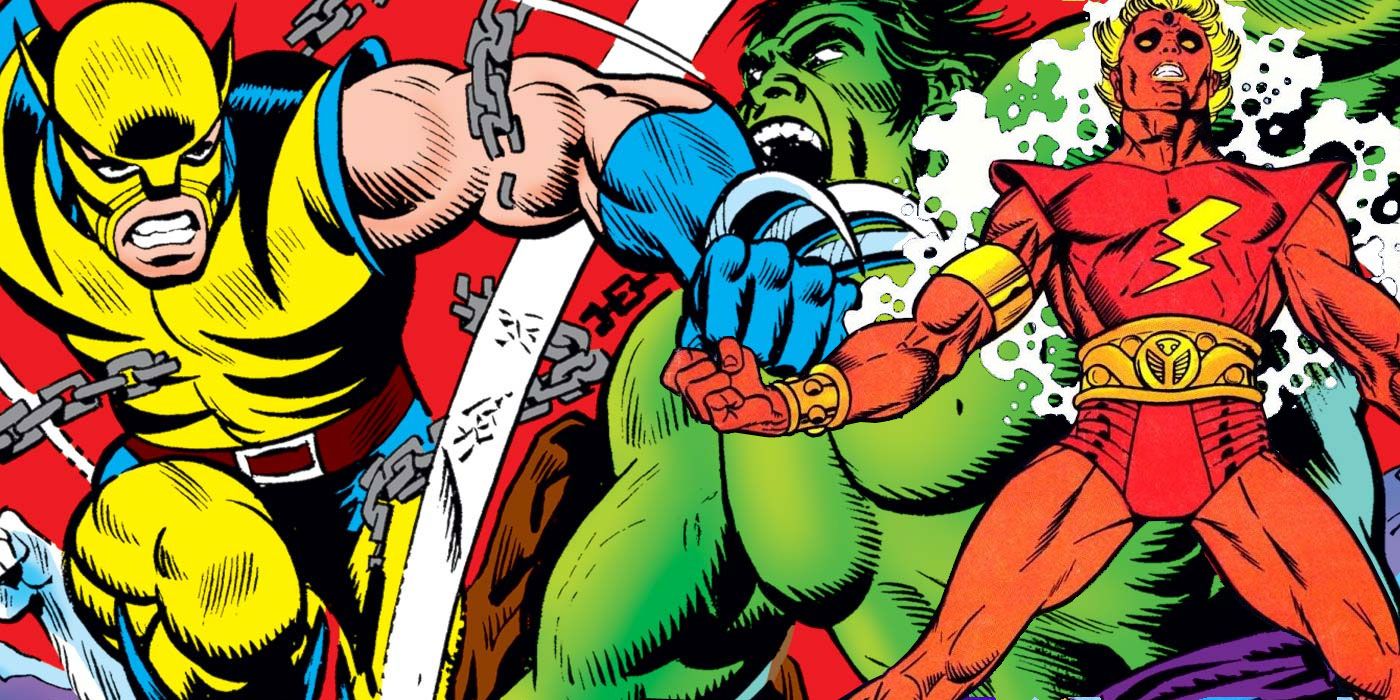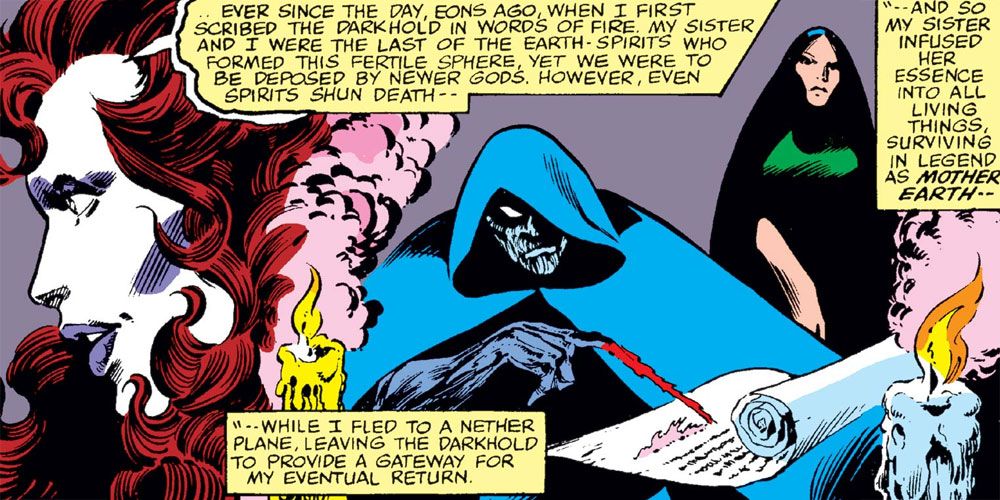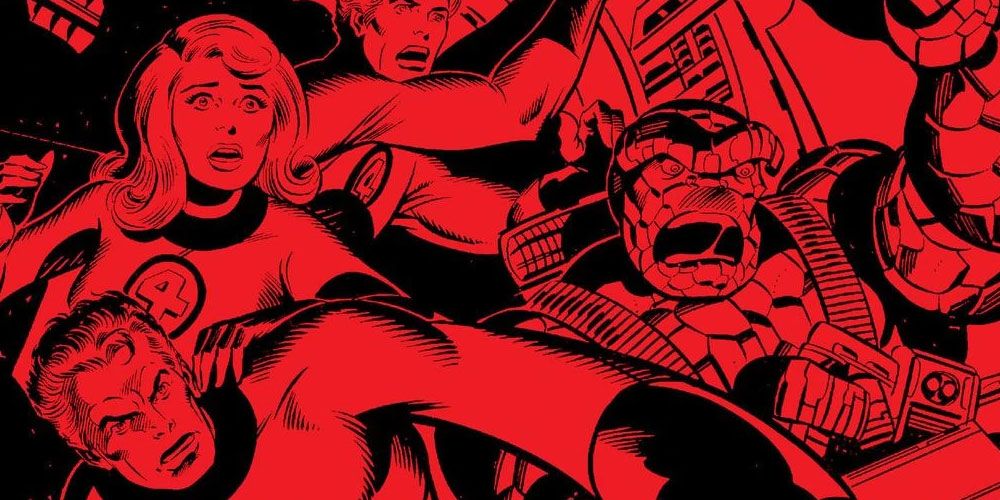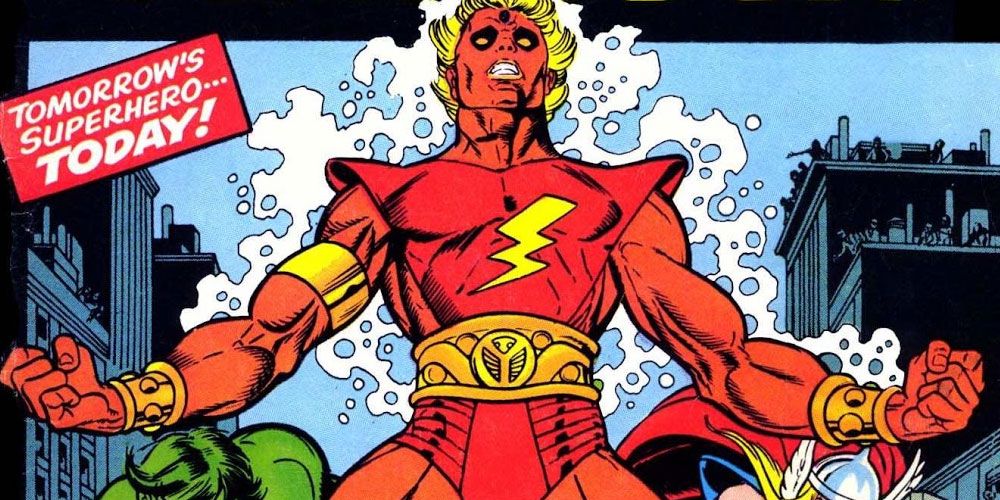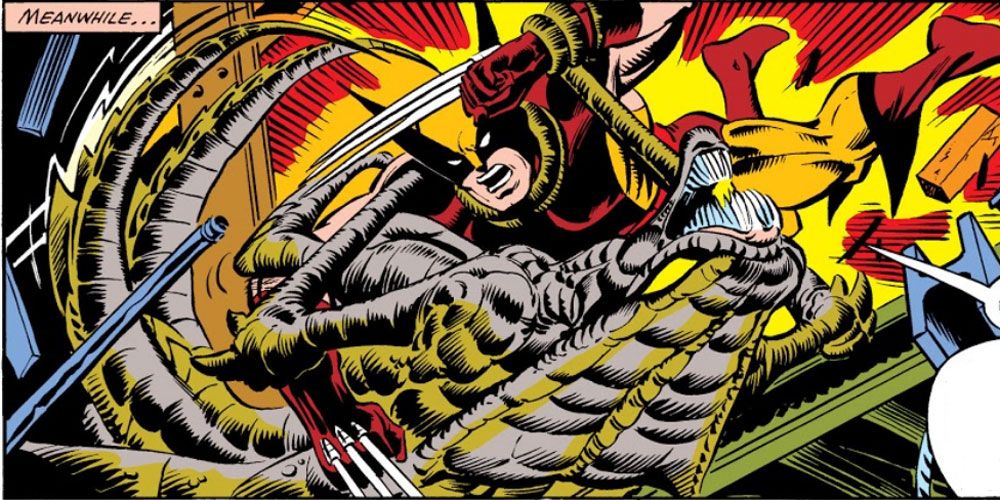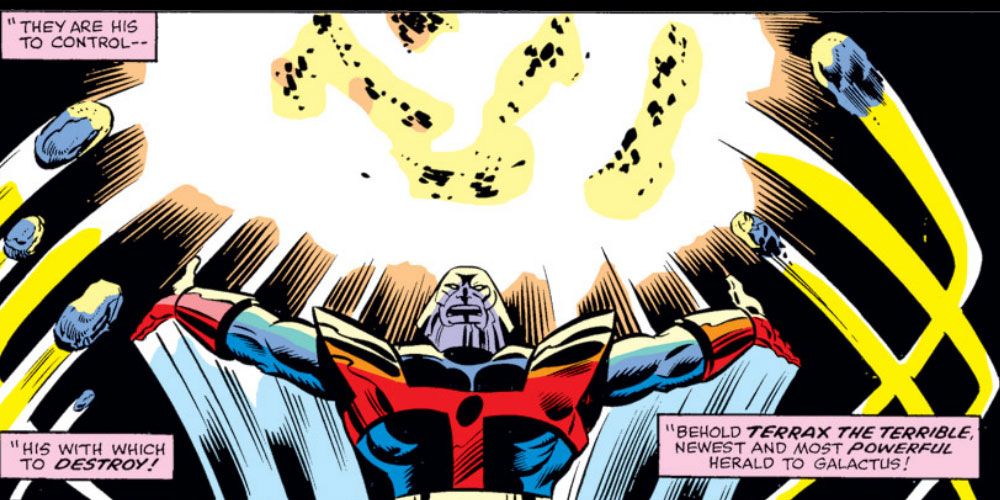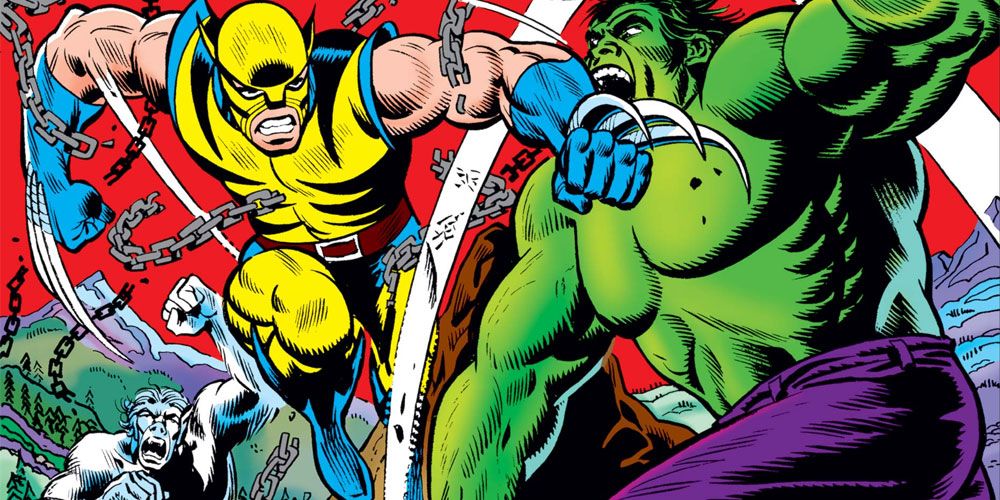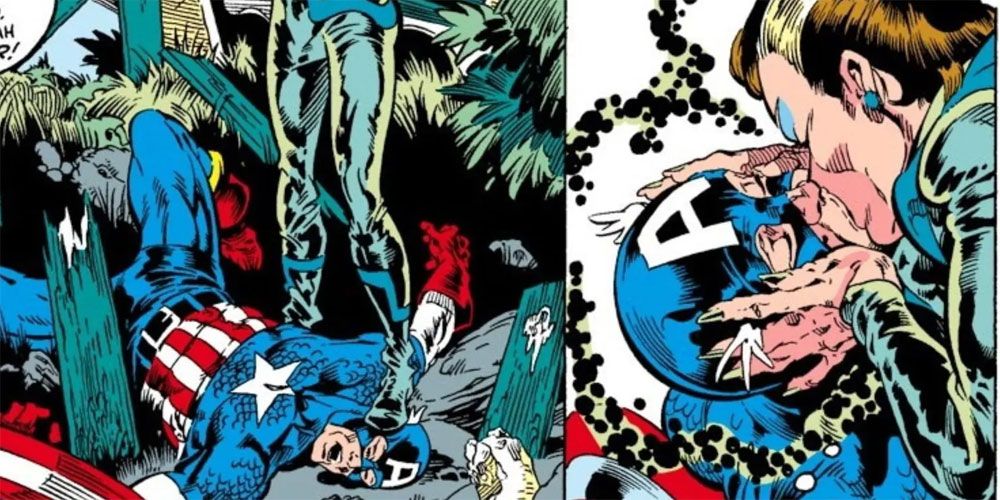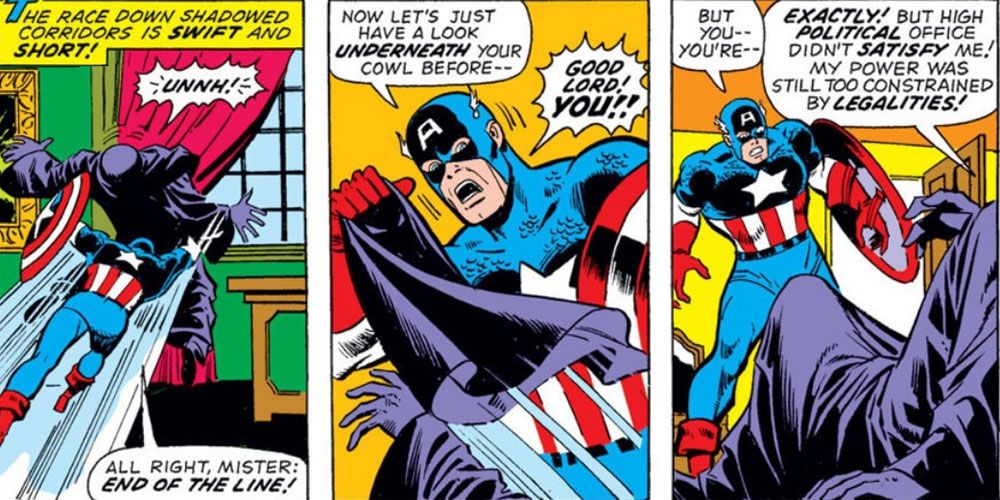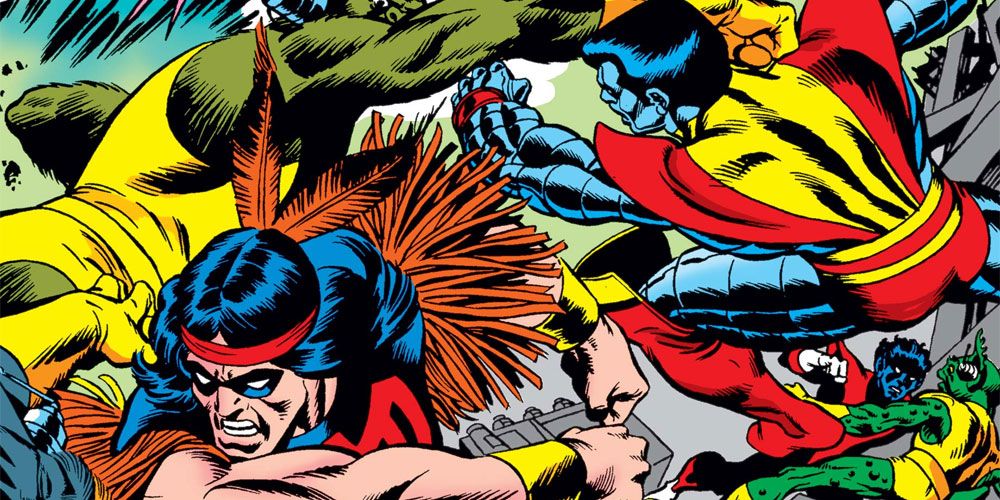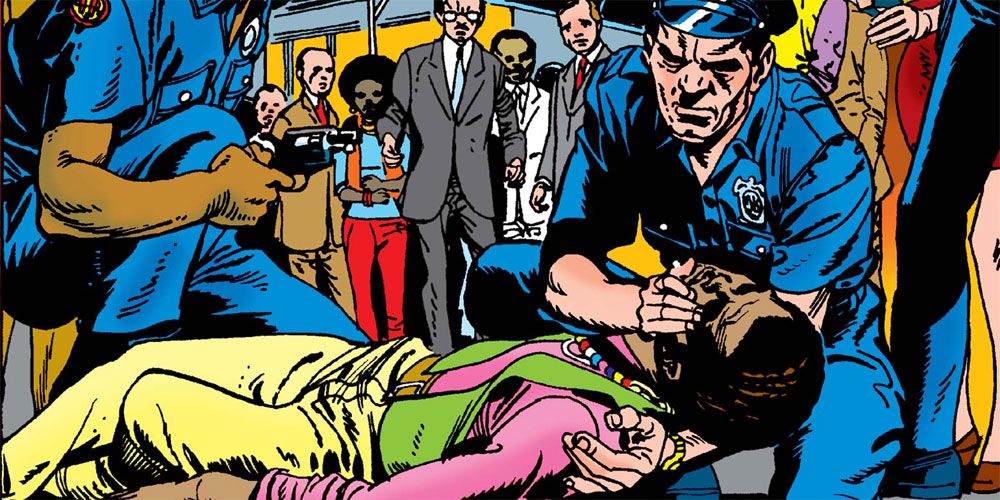The Marvel Cinematic Universe has adapted several comic book stories for its various films and series. Many times, they will adopt iconic scenes like Captain America and Iron Man fighting in Captain America: Civil War or Skurge the Executioner wielding two machine guns on attacking undead hordes in Thor: Ragnarok. Other times they will take a plot and freely adapt it to the screen. Avengers: Infinity War did this with Infinity Gauntlet.
Most of the source material comes from the current and modern age of comics. With Marvel venturing heavily into television, the mining of Marvel history for stories will continue. Going forward, producers should remember that the Bronze Age, usually defined as the period between 1970 and 1984, is ripe with stories that can be used for future waves of MCU films and series.
10 Avengers #187 Has Earth's Mightiest Heroes Fight The Demon Chthon
Avengers #187, by Roger Stern and John Byrne, was the climatic issue that tied the origin of the Scarlet Witch to the magical nature of Wundagore Mountain. The story saw the Avengers facing down their teammate Wanda possessed by the Elder Demon Chthon. This possession was made possible by the use of the Darkhold.
With Wandavision Introducing the Darkhold formally to the MCU and leaving it in the possession of the Scarlet Witch, this story seems ripe for adaptation. Perhaps aspects of it will make their way into Doctor Strange and the Multiverse of Madness. This story should show that Wanda possessing the Darkhold is not a good thing.
9 Fantastic Four #220 Is The Way To Tell The Origin Of The Fantastic Four
One of the hackneyed aspects of superhero movies is the origin being told for a new audience. In the case of the Fantastic Four, it becomes harder to believably depict. Fantastic Four #220 Is a great example of how to do it in a way that works with telling a larger story.
In a little more than one page, John Byrne and Joe Sinnott recap the origin succinctly as the team use their rocket to investigate the source of a mysterious global power outage. Rather than the first Fantastic Four film telling the story of the team's origin, a simple flashback from pilot Ben Grimm can accomplish the same task.
8 Marvel Premiere #1 Can Carry Adam Warlock Into His Own Cosmic Story
With both Adam Warlock and the High Evolutionary expected to appear in Guardians of the Galaxy Vol. 3, it wouldn't be unusual to see some part of Adam Warlock's first solo adventure be adapted. If it's not, then the opportunity exists to make use of Marvel Premiere #1. Written by Roy Thomas, with art by Gil Kane, it's easy to see the beginning of an epic story here.
The Man-Beast is a wonderfully stereotypical villain, and setting the story on Counter-Earth sets up something special. Eventually, this would lead to a religious allegory. Starting with the creator of Counter-Earth sending a savior to stop evil, the metaphor is very heavy.
7 Uncanny X-Men #155 Introduces The Brood
Alien threats are not uncommon in the MCU. While the Brood are tied closely to the X-Men in the comics, there's no need to establish mutants first. In reading X-Men #155 by Chris Claremont and Dave Cockrum, It becomes clear that other heroes could fit into the X-Men's place. Given Carol Danvers's history with the Brood in the comics, she might be a natural choice.
While the Brood might seem derivative of the xenomorphs from Alien, the intelligence of the Brood sets them apart. They also employ two other races, the gigantic Acanti that are used as living starships and Sidrian Hunters that resemble gigantic, one-eye roaches. This issue even has them aiding the villainous Deathbird, whose ultimate goal is seizing the throne of the Shi'ar Empire.
6 Fantastic Four #211 Introduces Terrax
If there is one of Galactus's heralds that generates fear, it's Terrax. As Tyros he was the warlord of an alien civilization, feared by all on his homeworld. In need of a new herald, Galactus imbued him with cosmic power over rock and stone.
While it seems natural for Galactus to be introduced to the MCU with the Silver Surfer as his herald, Terrax's transformation could be a signal of Galactus's inevitable debut. While Marv Wolfman and John Byrne had the Fantastic Four discover and deliver Tyros, it could be altered for almost any other MCU hero to be the protagonist.
5 Hulk #181 Introduces A Particular Mutant Hero
Mark Ruffalo's time in the MCU is probably limited. While he's still able to be the Hulk, it's almost past the point of being fan service to use him to introduce Wolverine. Of course, it's most likely that it would be the perfect way to introduce mutants to the MCU.
Len Wein and Herb Trimpe introduced Wolverine in the middle of a fight between Hulk and Wendigo. A monster like Wendigo could be an interesting addition, although he's not necessary for the introduction. Given that the Hulk is an accepted hero in the MCU, he might go into the Canadian wilderness to find a feral man that is causing problems for the locals.
4 Avengers Annual #10 Introduces Rogue And Can Help Bring Mutants To The MCU
Another Bronze Age comic that provides a blueprint for introducing mutants to the MCU is Avengers Annual #10. It's considered a key issue due to the first appearance of Rogue. The climactic battle is between the Avengers and the Brotherhood of Evil Mutants. Of course, this would be an introduction to mutants with a threat posed by powerful mutants working together.
While the driving force of the story is Rogue's assault on Carol Danvers that leaves the hero comatose, it doesn't need to be in an adaptation. Rogue's powers need not incapacitate her victims so severely. The Avengers brought together to face this threat would also have to be an entirely different team.
3 Captain America #175 Sees An Insurrection That Ends Tragically
Captain America #175, by Steve Englehart and Sal Buscema, is the culmination of a massive storyline that featured the first Secret Empire. Sam Wilson in the role of Captain America provides a perfect opportunity to bring in an organization that last vexed Peggy Carter. The initial ending for the classic story could even see the adaptation.
Originally, the leader of the Secret Empire was going to be President Richard Nixon. In the MCU, it's been established that there is a fictional president. The Blip could've provided the perfect opportunity for an opportunistic politician with malicious intent to use the power base of a secret organization to overthrow the government.
2 X-Men #95 Should At Least Be Part Of The First MCU X-Men Film
There will be an X-Men film in the future. If the past X-Men movies are any example, several different stories will influence the script. There is one story that hasn't made its way into an adaptation. That's the death of Thunderbird.
While it shouldn't be the focus of an entire film, it should be an aspect of the first MCU X-Men. Thunderbird, or any other mutant on the team, should be trying desperately to prove themselves to the point where it costs them their life. Eventually, it pays off with the X-Men gelling more as a team.
1 Amazing Spider-Man #96 Deals Seriously With Drug Abuse
The future of Peter Parker in the Marvel Cinematic Universe is up in the air. However, with there needing to be new supporting characters, one could present an adaptation of the first Marvel comic to eschew the Comics Code Authority's approval. The introduction of Harry Osborn could herald this story with Harry's need to live up to his father's expectations leading to drug abuse.
This is an important story in Spider-Man's history. Unfortunately, in all of the film adaptations, this real-world problem doesn't get close to being addressed. The MCU is ready to introduce Norman Osborn, and just like Spider-Man, he doesn't need to be introduced with his origin.

